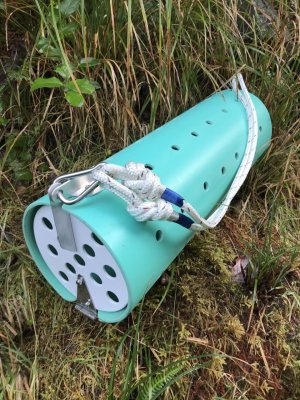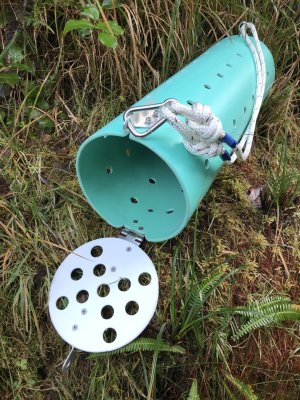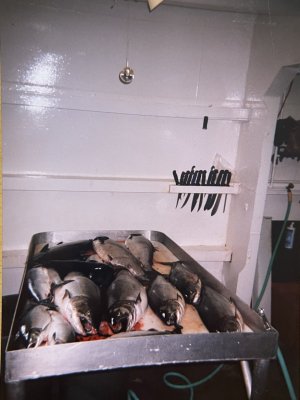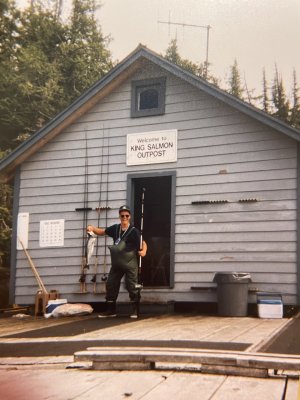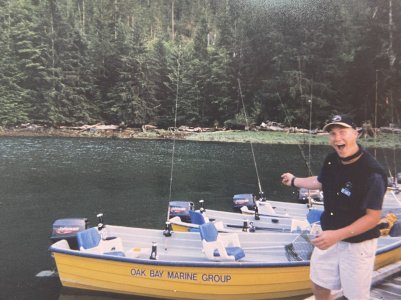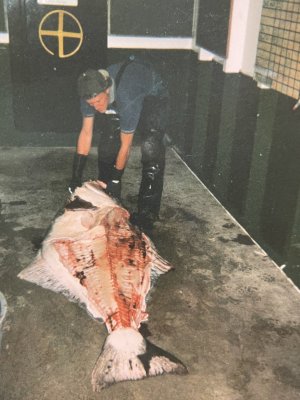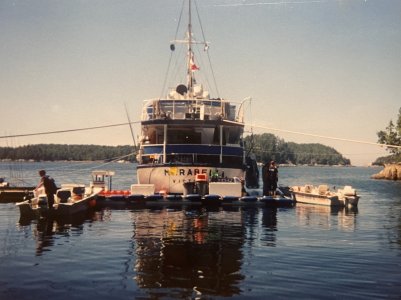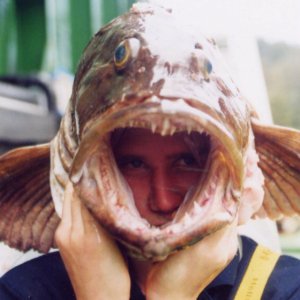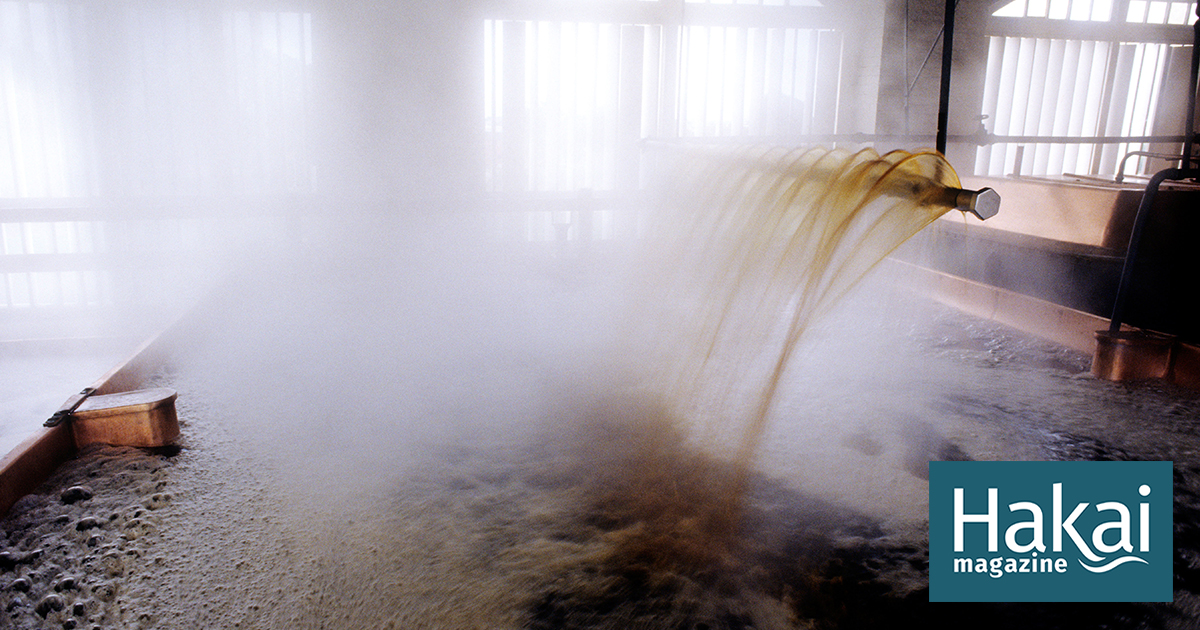Have you tried the flexible black canvas tubes with the zippers? We started with rigid tubes with screw in ends but moved to the flexible ones once we were introduced and never went back. I could put three or four in my backpack when going into the field to collect broodstock. No hassle with getting tangled on stream stuff. The zipper makes it Easy to get the fish in and out of. Gentle on the fish; no scale loss. Only problem was if a bear found it. How do hou get your broodstock in and out of those rigid tubes?
This is a smaller Chum tube I made using PVC pipe, aluminum angle, and stainless hardware.
The original design I saw was from Tofino, and I made some changes.
They aren't light, and the larger diameter Chinook versions are definitely a chore to pack down - but they are secure.
The hinged bottom allows you to place a fish headfirst, and then the loop end of the line is tied in to a shore line with a cannonball.
You can pigtail 3 or 4 in the current with the carabiners, but you need raft or swimmer to do it of course.
All the inside surfaces are sanded smooth, so no significant scale loss.
Fish can hold for extended periods, we have retrieved them after high water events without issue.
We also use them in Cap Troughs for holding select brood - no racing up and down.
Hoping this is the type of information people find useful - thanks for asking.
